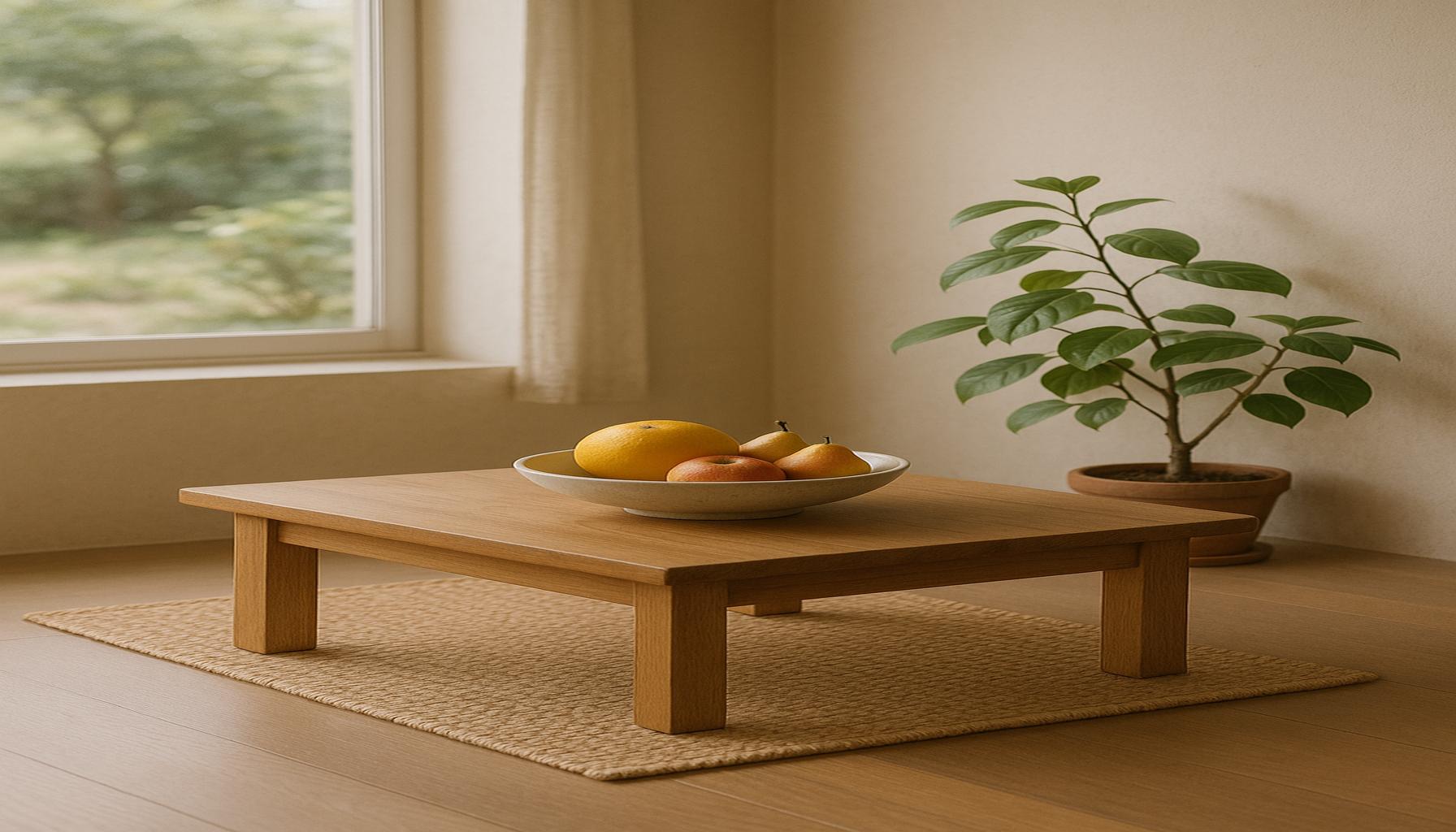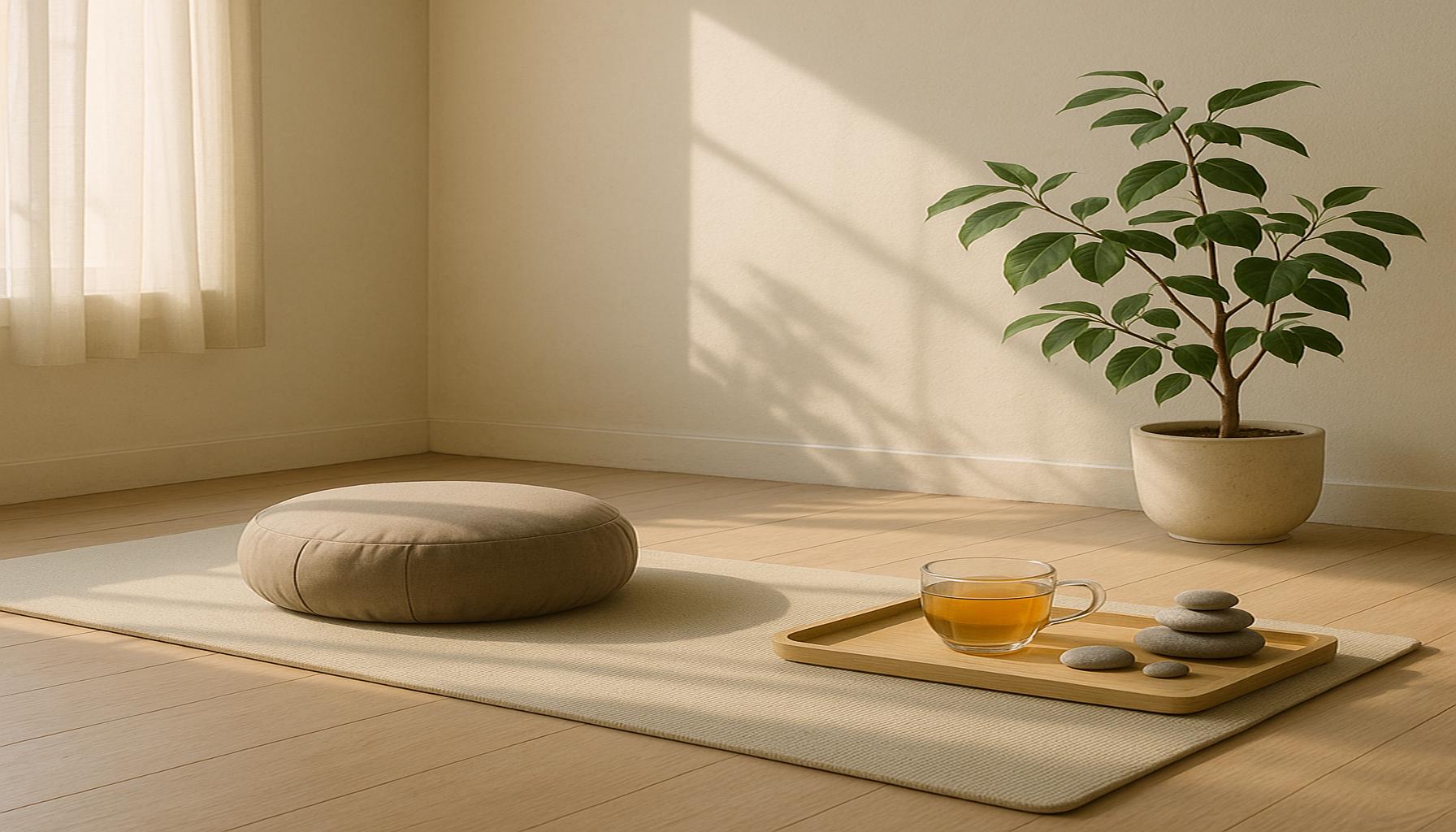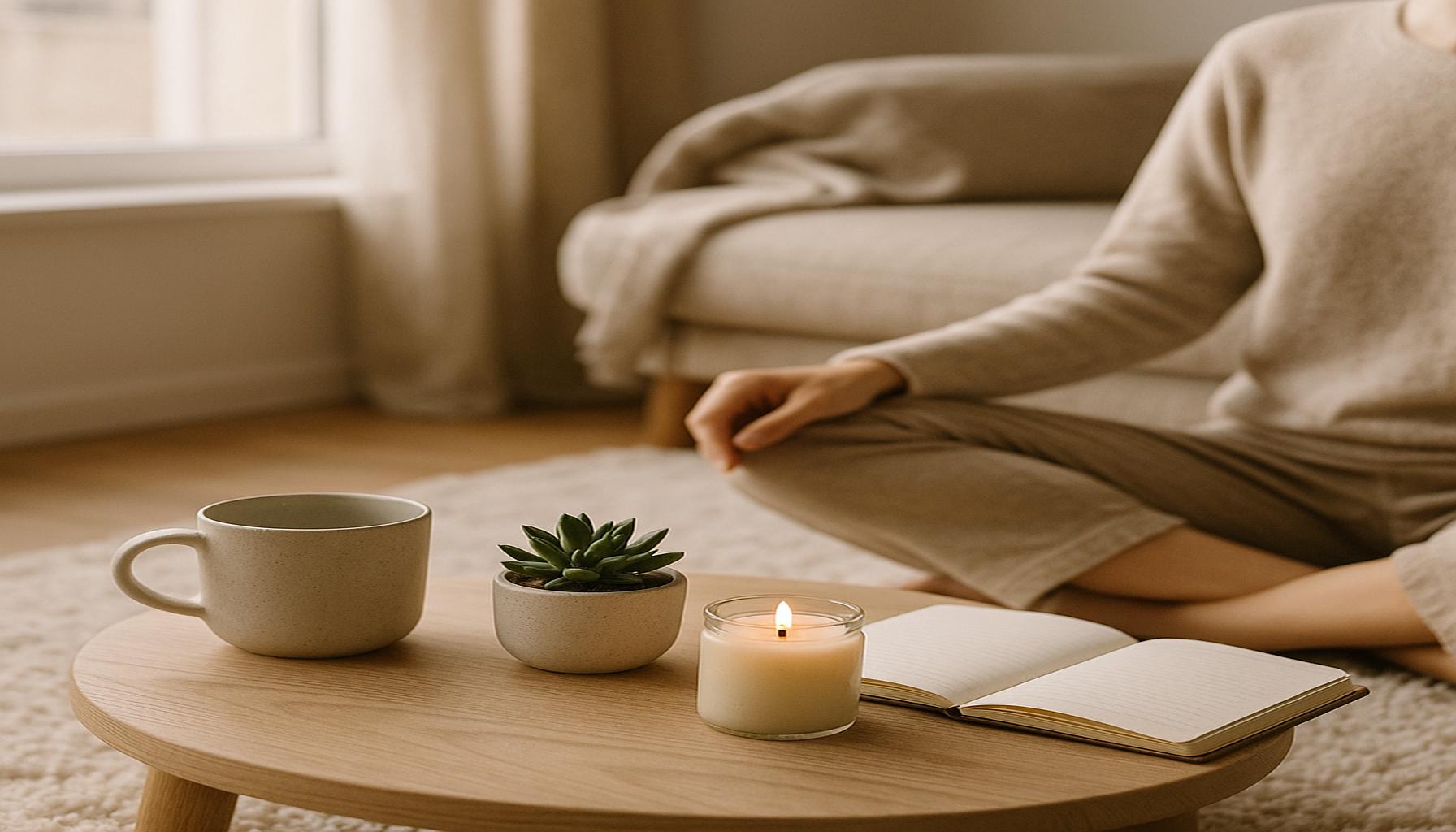The relationship between mindfulness and the creation of a minimalist environment: cultivating mental clarity
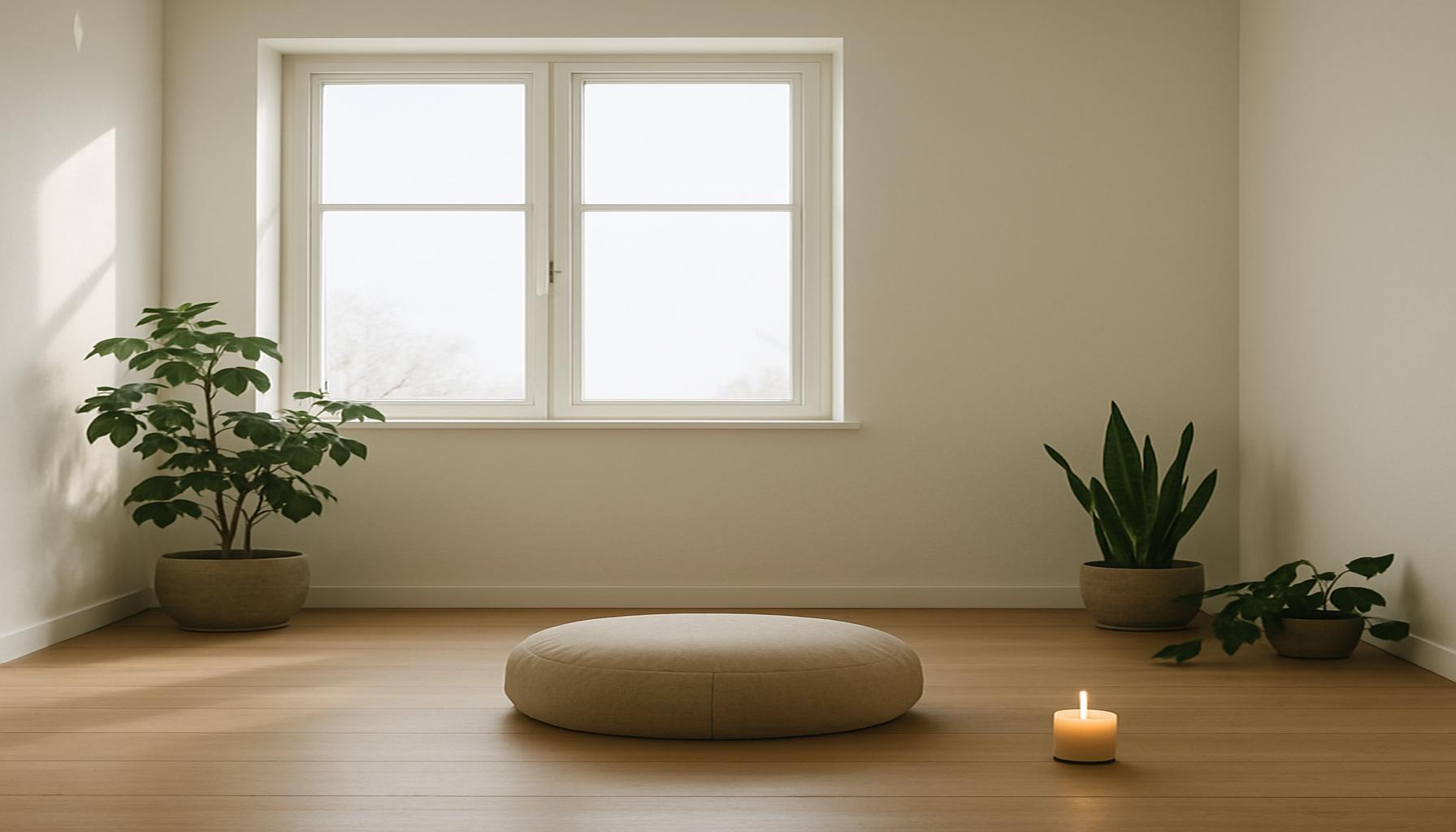
Understanding the Importance of Mindfulness and Minimalism
In today’s fast-paced world, mental clarity often feels like a rare commodity. As individuals grapple with distractions ranging from endless notifications to an overabundance of material possessions, maintaining focus and tranquility has become increasingly challenging. In this context, two concepts—mindfulness and minimalism—have emerged as powerful allies in the pursuit of well-being. By synthesizing these practices, people can foster a more intentional way of living that encourages clarity and purpose.
Mindfulness refers to the practice of being fully present and engaged in the moment, allowing individuals to observe their thoughts and surroundings without judgment. This principle not only enhances emotional regulation but can also transform one’s approach to various aspects of life, including how they navigate their physical space. For example, by practicing mindfulness, an individual might notice how clutter in their home creates mental distraction, leading to a conscious decision to simplify their environment.
- Focus: Mindfulness cultivates focus by empowering individuals to identify what truly matters to them. A worker might utilize mindfulness techniques during their breaks to enhance concentration and productivity throughout the day, thereby reducing the chaos that comes with multitasking.
- Reduction of Clutter: A minimalist environment eliminates excess distractions, promoting a sense of calm. Studies have shown that excessive belongings can lead to feelings of anxiety. By decluttering, individuals can create spaces that inspire creativity and concentration, free from the overwhelming barrage of visual noise.
- Intentional Living: Both mindfulness and minimalism advocate for living with intention, leading to conscious choices about possessions and daily activities. For instance, someone might practice saying “no” to unfulfilling obligations in order to create space for more meaningful pursuits.
Integrating mindfulness principles into the creation of a minimalist space can unlock profound benefits. Such an environment acts as a sanctuary for the mind, nurturing peace and clarity. For instance, a minimal bedroom with only essential furniture and calming colors can significantly improve sleep quality and promote relaxation, ultimately enhancing overall mental health.
This exploration into the synergy between mindfulness and minimalist living reveals essential strategies for achieving and maintaining mental clarity amidst life’s chaotic pace. From cultivating focus to creating intentional living spaces, this blend of practices invites deeper introspection and a rejuvenating lifestyle shift. Are you ready to discover the transformative potential of these interconnected practices and embark on a journey towards a simpler, more mindful existence?
DIVE DEEPER: Click here to unlock effective decluttering strategies
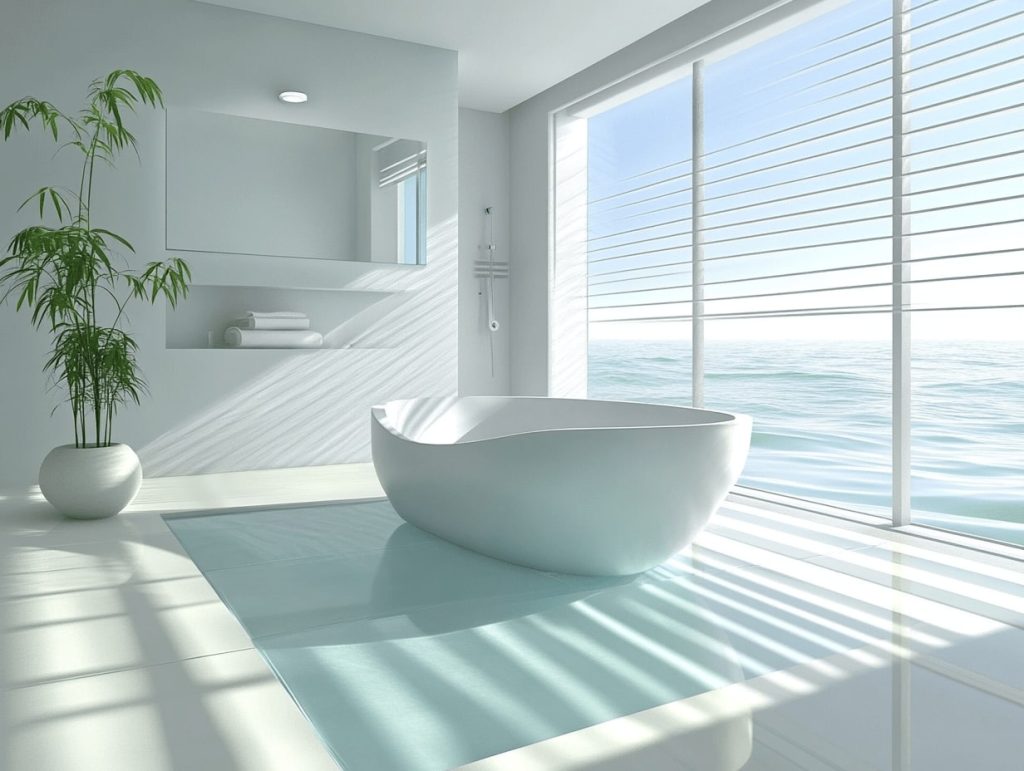
The Overwhelming Effects of Clutter on Mental Clarity
As urban living becomes increasingly crowded and consumerism pervades daily life, many individuals find themselves besieged by physical clutter. From overflowing closets to coffee tables laden with items, these environments can evoke feelings of stress and anxiety. This is where the intersection of mindfulness and minimalism plays a fundamental role. Research indicates that clutter not only distracts our senses, but it also affects our ability to focus. For instance, a study published in the Journal of Environmental Psychology found that individuals working in cluttered environments experienced diminished performance and higher levels of stress compared to those in organized settings.
Mindfulness serves as a powerful tool for recognizing the impacts of this chaos. By encouraging individuals to become aware of their surroundings and the feelings evoked by clutter, mindfulness may inspire actions to simplify their physical space. Instead of overlooking disarray, mindfulness practices prompt individuals to confront their clutter and evaluate its significance in their lives.
- Emotional Awareness: Mindfulness assists in recognizing the emotional responses triggered by clutter. A person may discover that certain objects carry negative associations or that the sheer volume of belongings contributes to feelings of overwhelm.
- Heightened Sensory Observation: Practicing mindfulness can sharpen one’s awareness of sensory experiences. Individuals may start to notice how their cluttered environments affect their mood—whether it’s a dark, disorganized room that feels oppressive or a bright, minimalist space that feels open and inviting.
- Encouragement of Intentional Clearing: Once individuals become aware of their physical environment through mindfulness, they can be motivated to take action. This might result in setting aside time to declutter, sell items that are no longer used, or donate possessions that could benefit others.
Transforming one’s space into a minimalist haven is an intentional act that requires not just a decision to discard items, but a deeper understanding of what is genuinely necessary for a fulfilling life. This connection between mindfulness and minimalism leads to tangible outcomes, enhancing overall mental clarity. As individuals gain control over their physical environments, they often experience a corresponding sense of liberation in their mental space.
Furthermore, the act of simplifying one’s environment can free up valuable cognitive resources that might have been previously dedicated to navigating distractions. Instead of becoming entrenched in chaos, individuals are invited to channel their energies toward pursuits that elevate their quality of life. This shift underlines a crucial takeaway: the transformative potential of creating a minimalist environment not only fosters clearer thinking but also revitalizes one’s sense of purpose.
In the next section, we will explore practical methods to cultivate mindfulness while designing minimalist spaces, allowing for a holistic approach to achieving and sustaining mental clarity in our increasingly complex world.
The Impact of Minimalism on Mental Clarity
In modern society, where distractions are abundant, the adoption of a minimalist environment can serve as a crucial tool in fostering mindfulness. By intentionally reducing the clutter that surrounds us, both physically and mentally, individuals can create a space that promotes serenity and focus. A minimalist environment encourages the removal of unnecessary items that often contribute to anxiety and overwhelm, paving the way for mental clarity and enhanced concentration.
Studies have shown that individuals who practice minimalism experience increased feelings of calmness and satisfaction. This is largely attributed to the way a clean, uncluttered space can impact our cognitive load. The brain is continuously processing visual stimuli, and when our surroundings are simplified, it allows for better focus and productivity. Mindfulness, coupled with a minimalist lifestyle, can unlock the potential to embrace the present moment, free from the chaos of excess.
Mindfulness Techniques in a Minimalist Space
The practice of mindfulness can be seamlessly integrated into a minimalist lifestyle. Techniques such as meditation, deep breathing, and mindful walking can be enhanced by a serene backdrop. When a space is devoid of distractions, individuals can immerse themselves fully in the practice, leading to profound insights and a greater understanding of oneself. Moreover, by creating a ritual in a specific, simplified environment, individuals are more likely to stick to their mindfulness practices.
Engaging in mindfulness within a minimalist environment not only cultivates mental clarity but also promotes emotional well-being. By focusing on the essentials and letting go of the non-essential, individuals can find joy in simplicity and increase overall life satisfaction. It’s about making conscious choices to surround oneself with objects and experiences that truly resonate, nurturing both the mind and spirit.
This integration of mindfulness and minimalism not only contributes to personal growth but also enhances one’s ability to manage stress. As we learn to prioritize what truly matters, we cultivate a sense of peace and clarity that reverberates through our daily lives, ultimately leading to more meaningful experiences and relationships.
| Category | Description |
|---|---|
| Reduced Distractions | A minimalist space minimizes sensory overload, allowing for better focus. |
| Enhanced Mental Clarity | Promotes clearer thinking and improved decision-making by embracing simplicity. |
| Emotional Well-Being | Fosters a sense of peace, joy and overall satisfaction with life. |
| Mindfulness Practices | Encourages the use of mindfulness techniques for deeper introspection and growth. |
DIVE DEEPER: Click here to simplify your digital life
Practical Steps for Mindfulness in Minimalism
Cultivating mental clarity through the synergy of mindfulness and minimalism isn’t merely about removing physical clutter; it also involves adopting a holistic mindset. This intentional approach can be widespread, especially in a fast-paced society where individuals often find themselves overwhelmed by consumer culture and societal pressures. By integrating mindfulness practices into the journey of minimalism, individuals can create living spaces that resonate with serenity and purpose.
One of the first steps in eliminating clutter is engaging in a process of mindful evaluation. This practice encourages individuals to carefully assess each item in their environment, asking themselves thought-provoking questions such as:
- Does this item bring me joy? Inspired by Marie Kondo’s philosophy, reflecting on whether an object adds value to one’s life can clarify its importance.
- How often do I use this? Identifying items that are rarely used can lead to the realization that they occupy space unnecessarily.
- What memories or feelings are associated with this item? Understanding the emotional connection can facilitate the process of letting go of items that no longer serve a purpose.
After identifying what truly adds value, the next step is to implement a mindful decluttering ritual. This can be approached as a meditative practice rather than a chore. Creating a calming atmosphere—perhaps by playing soothing music or lighting a candle—can help anchor mindfulness. Individuals might start small, decluttering one drawer at a time while focusing on the sensation of the objects they’re sorting and the emotions they evoke. This process allows for a profound engagement with the task at hand, enabling a deeper connection to one’s space.
Designing a Mindful Minimalist Space
Once the decluttering is complete, the focus can shift to crafting an environment that nurtures mental clarity. This involves thoughtful organization and design, contributing to a minimalist aesthetic that prioritizes functionality and tranquility. Incorporating elements such as natural light and indoor plants can enhance a space’s inviting feel. Studies have shown that exposure to nature, even indoors, can reduce stress levels and improve overall well-being.
Moreover, adopting a one-in-one-out policy can help maintain a minimalist home. By allowing oneself to introduce a new item only if another is removed, this philosophy encourages ongoing mindfulness regarding consumer habits. Such consciousness leads to intentional purchasing decisions, steering individuals towards acquiring items that harmonize with their minimalist environment.
Mindfulness Practices to Support Minimalism
Incorporating mindfulness techniques such as meditation can further promote a minimalist lifestyle. Regular meditation helps cultivate focus and clarity, enabling individuals to appreciate the simplicity around them. Mindfulness activities, such as walking meditation in a decluttered environment, can enhance the sense of calm and reinforce the lessons of minimalism. Practicing gratitude for the items that remain—rather than lamenting what has been let go—can solidify one’s commitment to a clearer, more focused mindset.
Engaging with these practices not only fosters a more organized environment but also nurtures a resilient relationship with one’s physical space. As mindfulness deepens, individuals may discover sustained clarity that permeates their lives, leading to healthier habits and improved mental well-being. Through the deliberate integration of mindfulness and minimalism, the path to cultivating mental clarity becomes not just achievable but profoundly enriching.
DISCOVER MORE: Click here to enhance your daily efficiency
Conclusion: Embracing Mindfulness for a Clearer Mind and Space
In the quest for a serene and purposeful life, the relationship between mindfulness and the creation of a minimalist environment serves as a powerful catalyst for cultivating mental clarity. By practicing mindfulness, individuals are empowered to reassess their physical surroundings, engage in intentional decluttering, and invest in emotional well-being. This journey is not merely about minimizing possessions; rather, it involves a profound transformation of how one interacts with their space and consumption habits.
As individuals approach their living spaces through a lens of mindfulness, they can create an environment that is both calming and reflective of their true values. The deliberate process of evaluating possessions fosters a sense of gratitude and realization, ultimately leading to a more fulfilling connection with what remains. Coupled with mindful practices such as meditation and an appreciation for simplicity, individuals can achieve a lifestyle characterized by clarity and reduced stress.
The journey towards a minimalist environment is ongoing and requires persistent reflection and mindfulness. Each small step, from the decluttering ritual to maintaining a one-in-one-out policy, reinforces a commitment to intentional living. As the clutter diminishes, both physical space and mental burdens lift, allowing for a deeper connection with oneself, others, and the world around. This intertwining of mindfulness and minimalism invites individuals to embark on a path that not only clears their surroundings but enriches their daily experiences.
By embracing these principles, one can uncover a life of simplicity, purpose, and profound mental clarity, making the synergy between mindfulness and minimalism a gateway to enhanced well-being.
